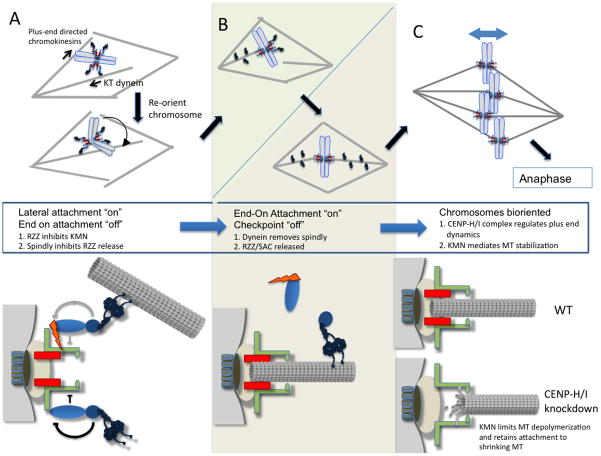Figure 2.
The progression of chromosome microtubule interactions from initial attachment to final end-on attachment. (A) The plus end directed activity of chromokinesins, bound to chromosome arms, combined with the kinetochore bound minus directed motor activity of the dynein complex may serve to rotate the chromosomes so that their KT face opposing sides of the microtubule spindle and increase the likelihood that sister KT will attach to opposite poles. While KT lack end-on attachment, they produce a mitotic checkpoint signal possibility through the recruitment of checkpoint proteins by RZZ. During this time, RZZ also acts to inhibit the Ndc80 complex from producing end-on MT attachment. Spindly in turn inhibits RZZ. Grey arrows indicate that it is unclear if RZZ still inhibits KMN after dynein binds a microtubule (B) As end-on MT attachment is achieved through the KMN, spindly is removed from kinetochores by dynein mediated stripping. This removal relieves the inhibition of RZZ by spindly. RZZ can then leave the kinetochore in the absence of spindly and the mitotic checkpoint is silenced. (C) KMN binds the lateral surface and CENP H/I regulates the plus ends of microtubules that are “end-on” attached. CENP-H/I depletion results in less stable MT plus ends that can results in MT depolymerization, which is rescued by the KMN.

